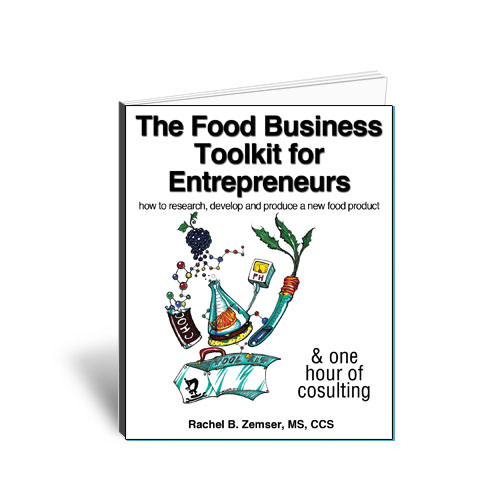Q&A with Gerald Drummond, Alan Slesinski, Campbell’s Foodservice
An executive's perspective on clean label formulating

Campbell’s Reserve Broadway Basil & Tomato Bisque starts with fresh cream and vine-ripened tomatoes. It has no added preservatives, artificial flavors or colors from artificial sources.
PHOTO COURTESY OF: CAMPBELL’S FOODSERVICE (WWW.CAMPBELLSFOODSERVICE.COM)

Campbell’s Reserve Loaded Clam Chowder features sustainably sourced clams, no artificial flavors or added preservatives.
PHOTO COURTESY OF: CAMPBELL’S FOODSERVICE (WWW.CAMPBELLSFOODSERVICE.COM)

Gerald Drummond, executive chef, Campbell’s Foodservice
PHOTO COURTESY OF: Campbell’s Foodservice

Alan Slesinski, director of R&D, Campbell’s Foodservice
PHOTO COURTESY OF: Campbell’s Foodservice




Prepared Foods talks about clean label formulating with Campbell’s Foodservice executive chef Gerald Drummond (left) and Alan Slesinski, director of R&D. In addition to custom work, Campbell’s Foodservice, Camden, N.J., offers more than 500 soups, beverages, broths, sauces and entrées from brands including Campbell’s, V8, Pepperidge Farm, Prego, Pace and Swanson.
Prepared Foods: How would you define and apply “clean label” formulating?
Alan Slesinski: I believe in just keeping it simple and in using recognizable ingredients without adding anything unnecessary. I strive to use only ingredients that I would use in my own kitchen at home.

SOURCE: CAMPBELL’S FOODSERVICE
Clean label formulating starts with picking the best ingredients available and partnering with suppliers to provide the best starting materials possible. We take a proactive approach to analyze our ingredient and nutritional statements to look for ways to simplify recipes and make improvements to nutritional profiles.
For example, we are removing unwanted ingredients such as colors from artificial sources, artificial flavors, MSG and high fructose corn syrup from our foodservice portfolio. We are constantly on the lookout for the best ingredients and are committed to continuously improving our product recipes.
PF: Chef Gerald, consumers may not even know clean label as a term but how long have you considered this approach?
Gerald Drummond: Consumers are becoming more and more aware of ingredients used in foods purchased both in grocery stores and in restaurants. Traditionally in restaurants, consumers don’t see the ingredient lists and therefore haven’t paid as much attention. However, that’s changing and there’s been a focus on “clean label” for about six to seven years. Now, restaurant operators are looking to offer these options. Chefs need to keep up with the habits and trends that are most relevant to their patrons. I first switched to cleaner labeled foods in 2014 for a “Healthy Living Menu” I developed to bring attention to the positive sides of healthy eating.
Again, since consumers are now more knowledgeable about ingredient statements and nutritional labels, it’s now pushed that clean label initiative into foodservice. Operators now ask for clean label foods, and we don’t see this changing anytime soon.
PF: How has clean label formulating changed most during the past few years?
Slesinski: The largest shift has been from simply removing “bad” or unrecognizable ingredients to now adding more positive ingredients. We want to ensure that every ingredient we add earns its way into the recipe. We don’t add any unnecessary ingredients and make sure each ingredient adds value. I also want to be sure we use the source of each ingredient closest to its original form.
PF: Aside from actual ingredient sources or names, what health concerns most impact your work?
Drummond: Sodium has been on consumers’ minds for quite some time. In the last 10 years, I’ve also seen many brands eliminate or reduce sweeteners such as high fructose corn syrup from many processed foods and beverages.
Companies shifted towards using “evaporated cane syrup” or “real cane sugar” but consumers are quickly learning that this is still just sugar. Campbell is constantly monitoring consumer trends and exploring new product innovation and renovation to deliver on the market needs and continues to focus on the sodium and sugar levels within our portfolio.
Additionally, we look to add more of the “good” ingredients. As Alan mentions, this translates to more vegetables, whole grains and protein. We also are exploring more plant-based options to bring more beneficial ingredients.
PF: Can you give us a behind-the-scenes example of a clean label project?
Slesinski and Drummond: We work as a united team to develop the best possible recipes. From early stages of development, we scrutinize the ingredients that we are using and the anticipated resulting nutritional profile of our products. We challenge each other to ensure that we make great tasting food that meet all of our development guardrails and targets. We constantly strive to improve our approaches and find new ways to improve our ingredients and recipes.
For our recent launch of Reduced Sodium frozen soups, we did not rely on salt replacers, and instead built our flavors with simple ingredients like chicken stock and spices. The result was a great tasting soup with lower sodium.
Looking for a reprint of this article?
From high-res PDFs to custom plaques, order your copy today!










